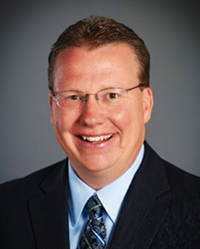Are we at an inflection point for change in the A/E professional services industry?
The unrelenting challenge of sustaining growth in the highly competitive A/E marketplace remains a constant. This growth imperative fuels the ongoing trend toward industry consolidation – whether the goal is adding new services, expanding a client base, gaining market share, entering new geographies, creating a hedge for talent, satisfying shareholders, or just plain hubris.
Responding to the global financial crisis of 2008, many A/E professional services firms embraced a diversification strategy to adapt to the changing economic, political and social landscape. The desire to become a full-service provider was strong, highlighted by the (largely unsuccessful) mergers between engineering companies and contractors. At the same time, client organizations started to face significant stress to do more with less which posed both opportunities and constraints in the industry. Focusing on core markets became very important.

Terry A. Ruhl, P.E., F. ASCE, previously served on CH2M’s board of directors and as president of the firm’s National Governments and Transportation businesses. He is currently a management consultant as well as a board director at Argus Consulting, a firm that plans, designs and constructs fuel facilities and systems for airlines and railroads. |
Fast forward to today, I believe A/E professional services firms (PSFs), especially those sectors involved with infrastructure development, are at an inflection point to future change. Most notably, could a transformational shift in business strategy, beyond the current industry-wide consolidation be taking place?
The industry is mature and fragmented with few barriers to entry. Moreover, technology innovations have migrated from outside of the traditional services providers. For example, civil engineering services are being complemented more and more by systems engineering and big data analytics specialists. These technology solution innovators are likely to broaden the service provider pool for existing infrastructure clients.
A telling statistic of the need for improved understanding of the future industry trajectory is summarized from Environmental and Financial Consulting Group's previous surveys of industry CEOs, where 90% have touted their respective acquisitions as marginally or fully successful – even without any apparent industry profitability improvement over the same time period. This will still likely lead to the prediction that industry consolidation will continue (EFCG).
Academic research has also shown that regardless of the industry, as much as each sector stresses that they are unique, the resulting business performance improvement statistics have not shown significant benefits for acquiring firms. In fact, merger and acquisition activity can often lead to value degradation for the acquirer (Haleblian, et. al., 2009). Laurie, et. al. (2006) estimated that “65% of acquisitions have destroyed more value than they create.” Moreover, of those mergers and acquisitions that have been successful, a codified process (more than experiential knowledge) with strong leadership and integration management has been crucial (Steigenberger, 2016).
Under pressure to constantly grow or get left behind, the A/E PSF industry must better address the triad of improved client satisfaction, enhanced employee engagement and resulting improvements in business performance and company succession by alternative and innovative means, especially given that industry merger and acquisition multiples have been high. While consolidation is likely to continue, there is some level of evidence to suggest that an inflection point may be present which could lead to more alternative business arrangements from alliances and joint ventures, to specialized segmentation and even “brokering” networks across industries to take advantage of developing service and technology advantages.
So, the question is, are there other partnership models and/or disrupters on the horizon for achieving sustained growth in the future – not necessarily as a replacement for mergers or acquisitions, but as additional or substitute growth strategies for achieving long-term business objectives?
We’ll likely see more cross-industry company and individual provider networks growing beyond the traditional sector organizations. The concept of brokering solutions (service and technology disruption) between broader networks will develop to satisfy client and service provider delivery expectations. For example, major technology players like Panasonic, Microsoft, Amazon, IBM, SAP, Cisco and PTC are entering the market with the Internet of Things, augmented and virtual reality and digital twin technology solutions in the smart infrastructure environment. This will likely lead to more strategic partnerships and alliances across the A/E sector.
The current industry trend, "barbelling" between larger, global companies, and smaller niche companies, could reverse in some respects, once companies develop sound financial/capital, client service and employee engagement strategies. I contend that the entry of private equity into the professional services sector has enhanced the focus on business management, beyond what we have traditionally seen through the long-time “founder’s mentality,” where engineering firms were largely being led by more technically oriented engineers.
Portfolio management and the need to “prune” business activities will become more and more crucial for maintaining a competitive advantage. As has been witnessed, divestitures could be an increasing trend. Re-deploying capital to higher margin, steady growth markets is a smart strategy for any company to follow.
Lastly, we need to pay attention to the generational impacts of our workforce as we enter a new, technology-laced decade. Will dissatisfaction working in low autonomy environments grow, largely due to the career and job satisfaction requirements of tomorrow's engineering workforce? These factors, too, could suggest continued consolidation may be substituted by at least some form of segmentation/specialization.
Acquisitions, both large and small, will still play a significant role in the growth of the professional services industry. However, the autonomy desired by the knowledge-based professional services sector may start to trend more toward informal and formal partnerships and alliances, and even segmentation. This is not the only view on the matter as Harding and Schwedel (2018) extend the philosophy beyond the professional services sector, citing the history of Rockefeller and Standard Oil as a case study, suggesting that “the M&A of the future will consist of a potpourri of joint ventures, minority investments, alliances and incubator-type investments.” But for those firms focused exclusively on mergers and acquisitions, more time and effort must be spent on how best to integrate the stakeholder companies in order to retain and markedly grow value.
References:
Environmental and Financial Consulting Group, Inc. (2016 and 2017). Annual CEO Reports. New York.
Haleblian, J., Devers, C. E., McNamara, G., Carpenter, M. A., & Davison, R. B. (2009). Taking Stock of What We Know About Mergers and Acquisitions: A Review and Research Agenda. Journal of Management, 35(3), 469-502.
Harding, David and Schwedel, Andrew (2018). Why Traditional M&A Is Becoming Less Important. May 25, 2018 post. Harvard Business Review.
Laurie, Donald L., Doz, Y. L., & Sheer, C. P. (2006). Creating New Growth Platforms. Harvard Business Review, May, 2006, pp. 80-90.
Steigenberger, N. (2016). The Challenge of Integration: A Review of the M&A Integration Literature. International Journal of Management Reviews, 19(4), 408-431.
FREE Whitepaper
Fairbanks International Airport Baggage Transport Conveyor Enhanced With Mod Drive™ System
Airports face a host of unique industry challenges, such as meeting efficiency regulations and seeking out the best maintenance practices to reduce costs and keep operations flowing. In today’s current economic climate, any potential cost savings can go a long way.
In 2019, Alaska’s Fairbanks International Airport (FAI) sought to modernize its equipment and operations. They were dissatisfied with the performance of the gearmotors on their baggage transport conveyors and began searching for new suppliers. Regal approached FAI with a solution that could improve equipment performance and simplify maintenance, with the added benefit of energy cost savings: the Hub City® MOD Drive™ system.
This white paper discusses the hardware deployed, the test results and the annualized expectations for ROI.
Recent Industry Insider columns
- A Bittersweet Goodbye
- Cyberattacks on the Aviation Sector: Threats, Trends and Strategies
- Empathy is Key to Effectively Working with the Media
- Carbon Capture, Utilization and Sequestration: An Environmental Gold Mine for Aviation?
- Now is the Time for Los Angeles to Lean Into its Aviation Legacy and Shape the Future








